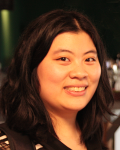Authors: Cynthia C. S. Liem, Jochen Huber
Editors: Cynthia C. S. Liem, Jochen Huber
In June 2017, we were invited to serve as editors of the newly established column on multidisciplinary aspects of Multimedia. Our major goal back then was to portray a look beyond ‘the big pond’ — multimedia research that is.
We set out to establish a multidisciplinary dialogue within the multimedia community and raise awareness for, as well as underline mutual benefits between neighbouring disciplines. Towards this end, we chose various formats: interviews of peers whose work sits at the intersection of disciplines, and opinion-based articles on multidisciplinary aspects of multimedia, also including community and conference spotlights.
We look back at a rich volume of articles. Over the past 5 years, we gave voice to 6 peers who work at the intersection of multimedia and other disciplines, e.g. accessibility, musical interfaces, digital naturalism or security and privacy. One common recurring theme amongst those interviewed is that they draw upon a variety of disciplines in their daily work–or as Andy Quitmeyer put it, his “work is anti-disciplinary. Instead of relying on [a] specific field of practice, the work simply sets out towards some basic goals and happily uses any means necessary to get there. Currently, this includes a blend of naturalistic experimentation, performance art, filmmaking, interaction design, software and hardware engineering, industrial design, ergonomics illustration, and storytelling.” We also discussed grand research challenges for our community. In retrospect, these were again mostly interdisciplinary, e.g. the likes of ‘universal design’, ‘generative everything’, the blending of real and virtual worlds through AI-powered multimedia and ‘reproducibility, openness and accessibility of research and communities‘. In this, Odette Scharenborg also emphasized the importance of being a visible role model, and ensuring that a diverse user audience should be accounted for, as well exemplified in her work on “making speech technology available for everyone, irrespective of how one speaks and what language one speaks”.
As for our opinion-based articles, we both highlighted communities that actively fostered interdisciplinarity (assistive augmentation and music information retrieval). Next to this, we shared further examples of ways to inclusively teach and design, as well as establish communities and reach more diverse audiences. Here, we often gave examples in which more established infrastructures in the academic community (such as conferences and workshops) could be combined with lesser-trodden paths of outreach.
Making connections between disciplines takes energy and commitment, which often needs to be invested next to other duties and services. In this, lately, we realized that both of us do not have the necessary capacity anymore to continue this series of columns. While this last piece marks the end of this column, for now, we are positive this column gave stage to multidisciplinary dialogues within, and inspirational to, our community. Given the grand research challenges our fields of research face, we speculate that inter- and multidisciplinary work will remain key to working towards addressing those challenges–there is ‘multi’ in multimedia.
About the Column
The Multidisciplinary Column is edited by Cynthia C. S. Liem and Jochen Huber.
Editor Biographies
Dr. Cynthia C. S. Liem is an Assistant Professor in the Multimedia Computing Group of Delft University of Technology, The Netherlands, and pianist of the Magma Duo. She initiated and co-coordinated the European research project PHENICX (2013-2016), focusing on technological enrichment of symphonic concert recordings with partners such as the Royal Concertgebouw Orchestra. Her research interests consider music and multimedia search and recommendation, and increasingly shift towards making people discover new interests and content which would not trivially be retrieved. Beyond her academic activities, Cynthia gained industrial experience at Bell Labs Netherlands, Philips Research and Google. She was a recipient of the Lucent Global Science and Google Anita Borg Europe Memorial scholarships, the Google European Doctoral Fellowship 2010 in Multimedia, and a finalist of the New Scientist Science Talent Award 2016 for young scientists committed to public outreach.
Dr. Jochen Huber is Professor of Computer Science at Furtwangen University, Germany. Previously, he was a Senior User Experience Researcher with Synaptics and an SUTD-MIT postdoctoral fellow in the Fluid Interfaces Group at MIT Media Lab and the Augmented Human Lab at Singapore University of Technology and Design. He holds a Ph.D. in Computer Science and degrees in both Mathematics (Dipl.-Math.) and Computer Science (Dipl.-Inform.), all from Technische Universität Darmstadt, Germany. Jochen’s work is situated at the intersection of Human-Computer Interaction and Human Augmentation. He designs, implements and studies novel input technology in the areas of mobile, tangible & non-visual interaction, automotive UX and assistive augmentation. He has co-authored over 60 academic publications and regularly serves as program committee member in premier HCI and multimedia conferences. He was program co-chair of ACM TVX 2016 and Augmented Human 2015 and chaired tracks of ACM Multimedia, ACM Creativity and Cognition and ACM International Conference on Interface Surfaces and Spaces, as well as numerous workshops at ACM CHI and IUI. Further information can be found on his personal homepage: http://jochenhuber.com




